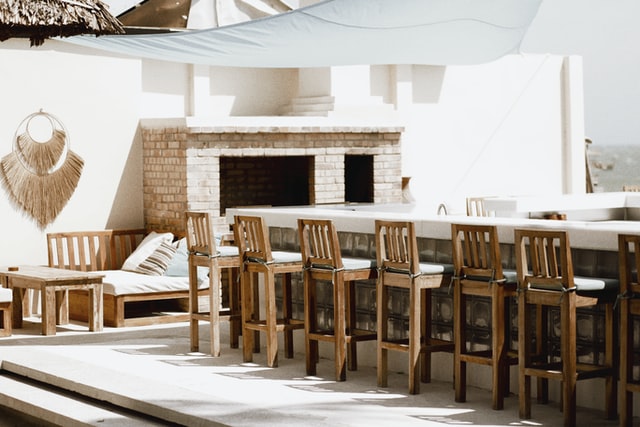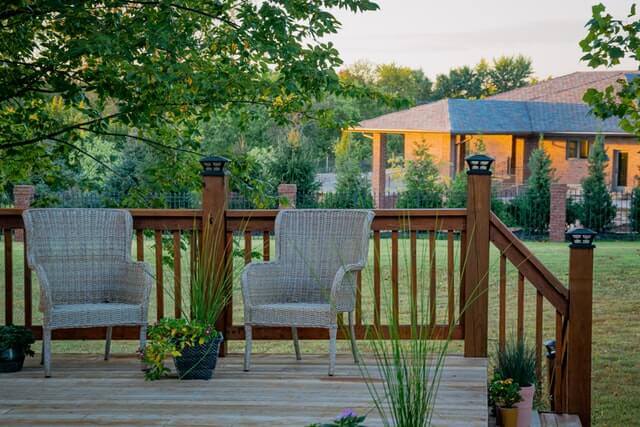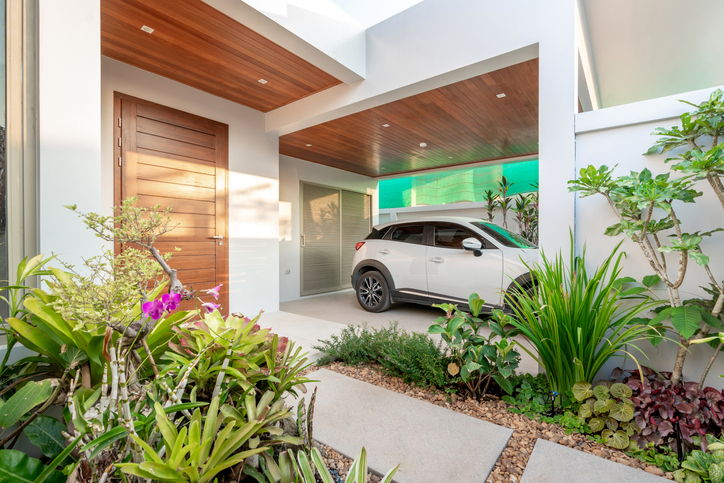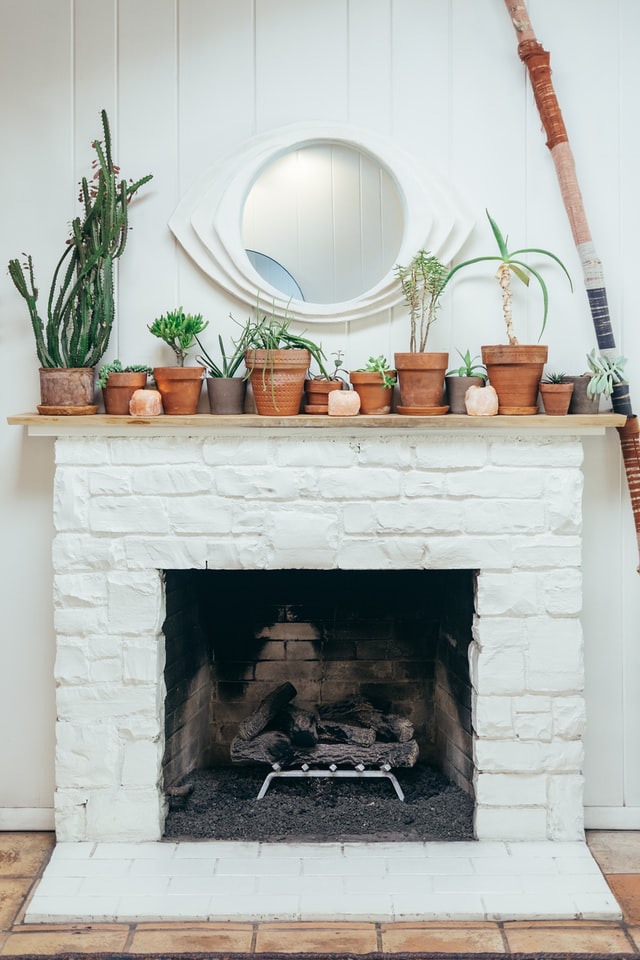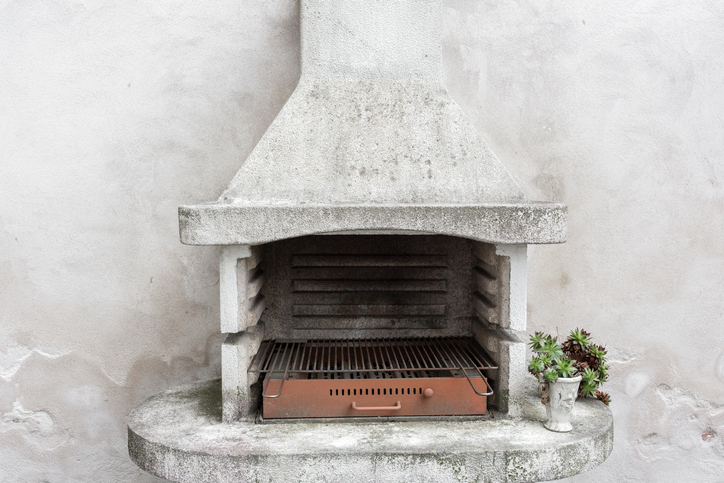In recent years, homeowners have been increasingly drawn to the idea of creating indoor-outdoor living spaces that blur the line between the indoors and the outdoors. These versatile areas offer a seamless transition from your home’s interior to its exterior, allowing you to enjoy the best of both worlds. Whether you’re looking to create a relaxing retreat or an entertaining area, build or re-design an existing space, or just think through your dream design, you’ll need to carefully consider both form and function.
In this article, we’ll share some tips and ideas for creating an indoor/outdoor area that perfectly balances fun and functionality, so you can make the most of your home’s outdoor living areas.
What is an indoor-outdoor living space?
An indoor-outdoor space is a design concept that seamlessly connects the interior of a home with its exterior, creating a cohesive living area that blends the comfort and convenience of indoor living with the beauty and openness of outdoor living. According to Matiah Fischer of Total So Cal Homes, an indoor-outdoor space typically features large windows or sliding doors that allow natural light to flood the interior, as well as outdoor living areas that are easily accessible from the inside of the home. The design of an indoor-outdoor space can vary widely depending on the homeowner’s preferences and the architecture of the home, but the ultimate goal is to create a functional and inviting space that brings the beauty of the outdoors inside while still offering all the modern comforts of indoor living.
Benefits of versatile spaces
Having an outdoor space for relaxing with your family and entertaining can benefit both you and the environment at large. Here are some of the main benefits of creating a patio or deck area that you’ll really use:
- Deck and patio areas give you more space for container gardens, herbs, plants, and flowers. This helps purify the air around you. Herb gardens even help put a little extra flavor on your plate so you don’t have to buy as many packaged items from the grocery store, which can reduce your carbon footprint and overall environmental impact.
- Outdoor areas with native plant life can help bring birds, butterflies, and other animals. Having plants and flowers around will help support your local eco-system.
- You’ll spend more time outdoors and less time inside the house. From getting natural vitamin D to simply boost your mood, spending more time outside is generally good for your health.
- You will have a great space for entertaining friends and family. From kid’s birthday parties to barbecues, potlucks, and casual cocktail parties, an outdoor space is a great place to gather people you like spending time with.
Creating an indoor-outdoor space to fit your lifestyle
A well-designed patio is one that offers lots of functionality for your favorite activities. Before you begin building or re-designing your space, sit down with a piece of paper, and write out how you want to use your patio. If you have a family that you share the space with, talk to them about outdoor activities they might be interested in doing at home if they had space. Do this early on in the design or renovation phase. That way you can craft a space that really works with clear objectives in mind.
Outdoor exercise
Skip the gym and make space for exercise on your patio or deck. While portable mats are your best bet for bodyweight exercises, you can also include racks of weights, outdoor gym equipment, exercise machines, and stationary bicycles if you have an indoor/outdoor space where they’re protected. Here are a few tips to help you create the ideal outdoor space for exercise:
- Block out a section of your patio or deck exclusively for exercise. Separating workout space from lounge space can make both areas more functional and pleasant. Measuring your space and making a quick sketch of how you can set it up to meet your needs can be very helpful during the early planning phase.
- Add equipment storage shed to your setup. For most people, a small, good-looking box built into your patio or deck can provide storage for items like yoga mats, weights, and more. Keeping these things handy will make it easier and faster to start your exercise routine.
- Consider mounting appropriate fixtures like a pull-up bar. A rack of free weights on a stand can also live outside if they’re covered with a durable, heavy-duty cover like something made for furniture. Just make sure you take them in during the winter months when you can’t use your patio due to rain or snow.
- Install essential items for sports. If you have room, fixtures like basketball hoops can be a great way to mix up your exercise routine on the patio. Families with children can also benefit from having another way to keep kids active. Consider buying an outdoor sauna to get a different kind of exercise! Saunas are great for releasing toxins and relaxing and will make you feel way better. 20 minutes in the sauna is the best way to start or finish a workout!
- Leave a little open space in your design to keep your patio and deck flexible. That way friends and family members can join in and exercise with you. You’ll also have more room to expand and add activities to your routine.
Wellness space
A dedicated open area for outdoor exercise, yoga, reading, and meditation is a smart addition to any deck or patio buildout or renovation. To create a relaxing area, your first goal should be comfortable seating that you’re happy sitting on for hours on end. Your existing sofa, sectional, or pair of lounge chairs will likely be a good start. Here are a few more focused ideas to help you enjoy reading outdoors:
- Go for lounge furniture that can recline. Chaise lounges like those you might find near a pool are an excellent choice. Sofas and sectionals that you can stretch out on work well and allow family members to join you too.
- Add poufs and throw pillows. They’ll provide extra comfort for long stretches with a good book.
- Position your reading area near an overhead light. This will allow you to read in the early morning hours or as the sun sets without worrying about eye strain. Outdoor pendant lights or bright string lights can work well if your reading area isn’t near any structure where you can mount outdoor light.
- Find a way to keep bugs at bay. Citronella candles and torches are an excellent pick. Screened-in spaces also help shield you from bugs. You won’t want to slather yourself in bug spray every time you take a book outdoors.
- Consider privacy curtains. Outdoor curtains can help shield you from the sun and they have the added benefit of filtering sunlight on bright days. Look for special UV-rated outdoor curtains that you can place on a track. Sheer curtains are also available, allowing some sunlight to get through while offering privacy.
- Opt for an oversized umbrella for sun cover if outdoor curtains don’t work with your design. Moveable umbrellas on wood or metal stands can also do double-duty and be positioned elsewhere on your patio or deck when needed.
- Make sure you have a table nearby. You’ll need a place to put your coffee, glass of water, and reading materials for the day. Even a tiny pedestal table allows you to keep your phone handy.
- Keep an outdoor blanket handy. A cool breeze doesn’t have to force you back indoors.
Home office
Outdoor patios can double as a home or garden office if you’re smart about what to include. For example, if you build a comfortable table and chair set into your outdoor seating area, it’s incredibly easy to take your laptop out there and work anytime you want. Bonus points if you can add an electrical outlet so you have power for essentials like your laptop and tablet.
Indoor/outdoor spaces like sunrooms also make for excellent, more permanent home office setups. In these areas, you can easily add a desk, bookshelf, file cabinet, and anything you need to get your work done. Just make sure you don’t block the great view and natural sunlight that you’ll get in these spaces. You’ll also want to include some comfortable seating so the rest of the family can join you after business hours are done. Here are a few tips for creating an amazing outdoor office:
- Choose a sturdy, durable table with comfortable chairs. Solid wood tables and metal designs with a glass top are often ideal. Even a small two-person dining set can provide a comfortable surface for work.
- Having access to natural light is essential for creating a productive and stimulating indoor-outdoor workspace. Exposure to natural light can help regulate your body’s internal clock, improve your mood, and enhance your overall sense of well-being. Additionally, natural light can help reduce eye strain and fatigue, making it easier to work for longer periods without feeling drained.
- Add a tablecloth to your outdoor surface to make it more comfortable when you’re working outdoors. This will help if you spend more than a few hours in your new outdoor office.
- Protect yourself from the sun by adding an umbrella, pergola, or awning. Tables that have built-in umbrellas can be a smart buy, but they’re not always necessary. You can add a free-standing umbrella to your work area and reposition it as needed when it’s time to relax.
- Install a power outlet near your work area to keep your laptop, phone, and tablet charged. Covered outlets can be installed almost anywhere, including on wood decking materials. Keeping an outdoor-rated extension cord handy can give you power quickly and easily if you can’t install an outlet near your work area.
- Keep it clean. You’ll be much more likely to use your outdoor office space if you don’t have to deal with dirt and dust. Tight-fitting furniture covers are a must-have for tables and chairs.
- Consider using an existing storage shed as an outdoor office.
Setting up your indoor-outdoor space
You’ve chosen a purpose for your outdoor space, now what? Here’s how to plan your project.
Choose your materials
If you’re building from the ground up, as in creating a brand new patio from nothing, you’ll need to first start by building your patio or deck structure. In general, durable outdoor materials like natural wood, pressure-treated wood, and stone are excellent building blocks for an outdoor space. Pressure-treated wood is a particularly smart buy on a budget since it can last for many years with minimal care. It also costs less than materials like stone. Concrete can also be a cost-effective material, and if you’re building your patio or deck as a partial exercise area, the smooth, flat nature of poured concrete can be beneficial. Scored concrete can provide a more decorative look that’s well-suited to modern homes. Other strong materials include clay bricks, flagstone, and patio pavers can be used. Mixing and matching materials to fit your budget and aesthetic is also perfectly acceptable when dealing with a patio or deck design, so don’t be afraid to get creative here. Not sure if the two materials will work together? Get samples and try them out in your backyard. You won’t be able to cover a large expanse of space with samples, but having a real physical representation – even if it’s a small one – can help you decide if your idea is feasible.
Pick furniture wisely
The furniture you choose for your deck or patio plays a big role when it comes to the style of your indoor/outdoor space. Here are a few guidelines to help you make the right choice when shopping for furniture or adding new pieces to your space:
- Match your home’s façade and style. Do you live in a modern home with lots of glass? Maybe you’ve got a Spanish-inspired home or an Italian villa look? Your deck and patio furniture should continue whatever trend your home and interior furniture have started.
- Go for durable furniture that’s made to go outdoors. This is important even in combination spaces if your area gets a lot of natural light. Materials like metal and teak are particularly popular picks.
- Opt for upholstery designed for outdoor spaces. It will last longer and be a lot easier to clean. Some outdoor upholstery options can even go right in the washing machine.
- Aim to seat everybody in your family comfortably. You’ll also want to have space for a few guests, or at the very least, a little bit of open area that you can populate with overflow seating like folding chairs.
Add features that connect the outdoors
Your indoor and outdoor living spaces can be expanded through various updates that will create a seamless connection between the two environments. Here are a few ways you can connect the indoors and outdoors at home to give them both an open, airy feel.
Sunroom. With a design that features walls of endless windows, an all-season sunroom makes it feel like you’re outside, even when the weather is less than perfect. Install durable flooring in your sunroom so that it can handle the foot traffic that comes inside from the front or back yard. Fill your sunroom with some comfy, casual outdoor furniture, like a woven wicker sofa and matching chairs. Make sure the fabric and materials you choose for the room are UV-resistant, since this part of the home will likely get tons of natural sunlight. Tall blinds or light-blocking window treatments will provide you with shade and privacy whenever you need it.
Deck. Use your deck for entertaining and relaxing by designing a comfortable, accommodating space. An outdoor kitchen with a large grill or outdoor fireplace will make cooking and eating outside a favorite tradition whenever the weather cooperates. Consider adding built-in benches around the edge of the deck for easy seating, or add a patio dining set with an umbrella so that friends and family can gather together and enjoy meals outdoors. The key to connecting this part of the outdoors with the indoors is to make it as comfortable, welcoming, and functional as possible.
Sliding glass doors. If you want to connect your indoors to your outside space, install a set of sliding glass doors leading from the kitchen to the patio. This is a great way to get more natural light and to create a seamless transition from the indoors to your outdoor living area. Add some pavers just outside of the glass doors, or install a gorgeous pergola for extra cover. Transform your backyard or patio into a casual dining area where you can bring your favorite meals outside to enjoy. A set of vertical blinds or large curtain panels can give you additional shade and cover when the sun gets too bright. If your patio area is small, a nice bistro set is a wonderful way to relax and enjoy a nice breakfast or morning cup of coffee before starting your day. Leave the sliding glass doors open on days when you want to let some fresh air and sunshine inside.
Update your lighting
Lighting is an often-overlooked element when it comes to outdoor décor. While you can’t make use of floor and table lamps unless they’re shielded from the elements in an indoor/outdoor space, there are other options that will work. Mounting lighting fixtures around the banister or railing of your deck is a particularly popular option. Overhead lights on the structure of your home nearby can also provide basic illumination for patios. String lights are a less permanent option that can add a bit of ambient excitement to your space. They’re not particularly bright in most cases, but they have a certain elegant charm that’s ideal for parties and dinners. Up-light canisters designed for outdoor spaces can also be used behind furniture or next to tables. You’ll want to keep these pointed at a structure since they’ll be blinding otherwise, but they can provide both basic illumination and a sophisticated feel. They can also be used to light potted plants and decorative elements with ease.
Leverage landscaping
Your patio and deck are likely positioned over a backyard full of foliage. To make your space more enjoyable, focus on creating a garden area or maintaining your backyard plants properly. While not specifically related to your deck or patio, landscaping your surrounding areas will improve the overall feel of the space. Including potted plants or incorporating planter boxes into your design can also help create a more inviting deck or patio space that you’ll want to spend time on. A baker’s rack with an easily accessible small herb garden can also be a great addition for the budding gourmet chef in the house.
Incorporate decorative pieces
Outdoor spaces like patios and decks should be surrounded by nature and filled with comfortable, durable pieces of furniture like sofas, chairs, and barbecue grills. Maybe you’ve even given yourself a bit of open space that’s perfect for meditation, yoga, or your morning exercise routine. The work isn’t quite done though. One thing many people forget about is adding decorative accessories to their patio or deck to make it feel more like a finished space. You don’t have to go crazy and spend a fortune, but a few finishing touches can really go a long way toward making your space more inviting. Here are a few outdoor decoration ideas for your deck or patio area:
- Add an outdoor rug to your porch or deck space. Look for rugs designed for either outdoor spaces or combination indoor/outdoor areas. These will stand up to tough weather and harsh sun. They’ll also be easier to clean.
- Focus on adding throw pillows to outdoor seating areas like your sofa or lounge chair. Single-colored styles work well, allowing you to mix and match brighter tones with more neutral options. Prints and patterns can liven up any outdoor space that’s starting to feel a little stale as well.
- Try adding a piece of art or a large decorative element. There are many options for adding visual excitement. Outdoor sculptures, outdoor rugs used as wall hangings, and even patterned outdoor curtains can be hung. Outdoor curtains have the added benefit of providing some sun protection and privacy if you can use them to enclose your deck or patio. Make the most of your time outdoors by creating a deck or patio space that truly speaks to you. Whether you plan to exercise or catch up on your reading for work, these tips can help you build or re-design outdoor and combination indoor/outdoor spaces your way.
Final thoughts
Creating an indoor-outdoor space that is both fun and functional requires some planning and creativity. By choosing furniture and decor that can withstand the elements and complement both indoor and outdoor spaces, incorporating natural materials and greenery, and adding lighting, a focal point, and accessories, you can create a seamless transition between your indoor and outdoor spaces. With these tips, you can transform your home into a comfortable and inviting oasis where you can relax, entertain, and enjoy the beauty of nature. So go ahead, get started, and create your dream indoor-outdoor space today!
